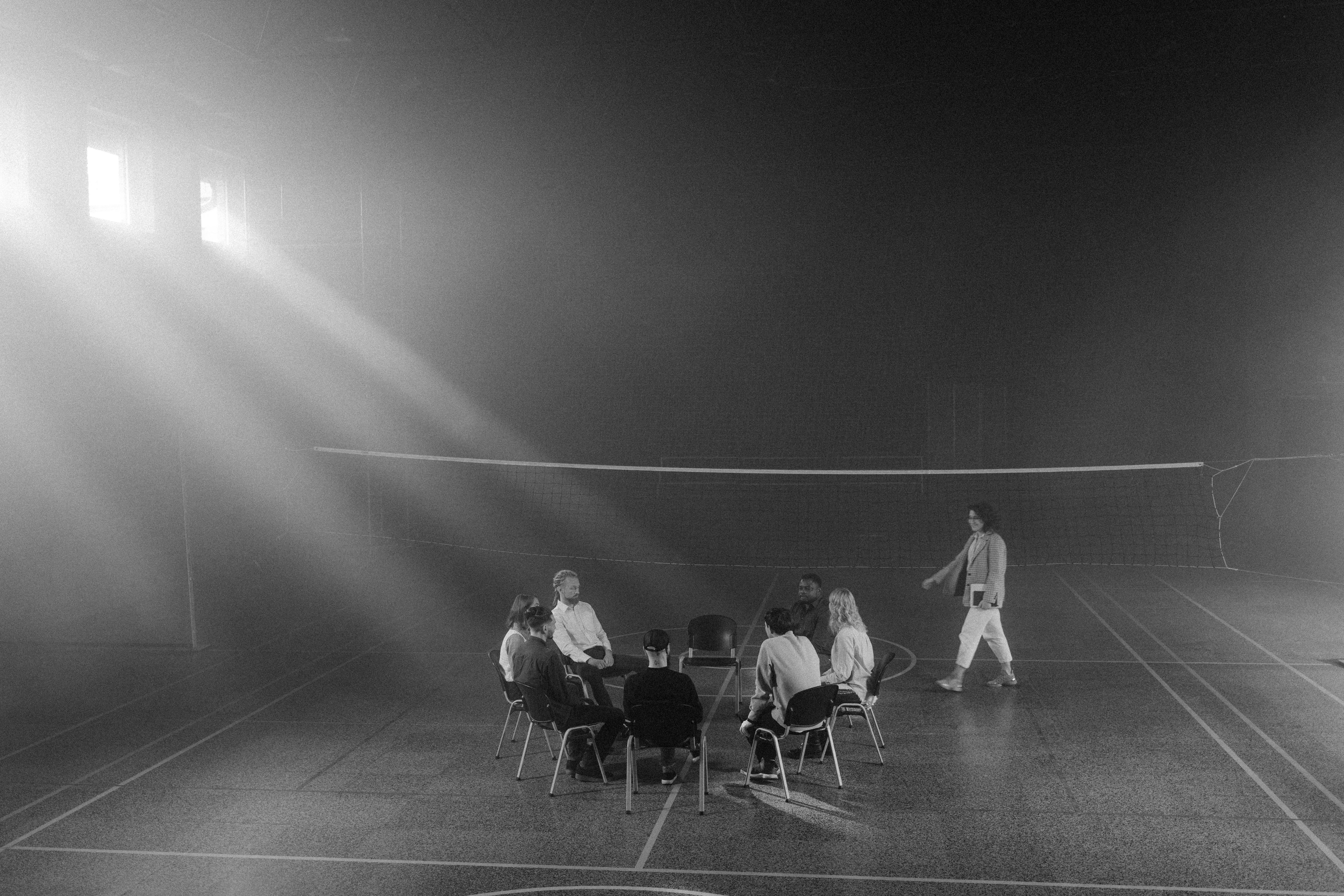Organizational skills are paramount in the educational setting of a blind student and include: student/teacher organization, handling materials, timely preparation of transcribed braille class lessons, and even spacing Nemeth braille math workbooks so that staff who do not read braille can offer help when needed. Your blind student will find it easier to keep up with the class in an organized and well-prepared classroom environment. It is essential to educate your staff and student on simple preparation tips, modifications, and techniques that will make the school day an efficient and effective learning experience.
1. It is always easier to teach good organizational skills early on (Preschool-Kindergarten) than to teach them in later school years. Teach your student to be prepared and organized by being a good role model.
2. Most likely, your braille learner will need additional space to store numerous materials, braille books, and various adapted materials. Here is a suggestion that worked for my students!
Provide (2) student desks to allow for good storage and organization of materials.
Desk #1 This is your student’s desk for classroom work and storage of frequently used braille literature materials. Literary materials to be stored in this desk may include: braille/auditory dictionary, Perkin eraser, whiteboard and stylus, marking items (crayons, colored pencils with braille labels for easy identification), and a code reference guide literature in braille. Store currently used braille literary books in order of volume under the student’s work desk/literary desk.
Desk #2 – This desk is for storing Nemeth’s work folders, materials associated with mathematics (braille ruler, listening calculator, abacus, analog braille clock, braille multiplication and division tables, and miscellaneous math materials). The student may also use a Nemeth reference guide sheet or book during the process of learning the Nemeth symbols, which should be readily available on this desk. Store currently used Nemeth braille books in order of volume under the math desk in a box or crate for easy access. It’s helpful for the blind student to have this extra desk and enough table/storage area next to it to avoid constant lifting of heavy materials like Perkin’s Brailler. Therefore, keep the Perkin’s Brailler on top of this desk to the student’s left so it is readily available.
3. Maintain up-to-date literary and Nemeth braille reference sheets that include all literary and Nemeth code that the student has learned to date. Both reference sheets should be updated during braille lessons to include the newly learned braille code for reference. Offer a small reference guide once the student completes the literary code. A list of basic rules governing the braille code must also be available in braille for student reference. This list of reference guides is an especially useful reference tool for more complicated Nemeth code.
4. Educational braille books not currently in use should be stored in a convenient location in the classroom; review the placement with the student and encourage them to access their braille books independently or follow through until the student becomes fully independent in this process. Volumes should be checked out when completed or no longer needed and sent home for reference.
5. Consider having your student’s Nemeth workbooks transcribed in whole or in part with print over braille so that non-braille reading staff can assist the student with instruction when needed.
6. Store smaller items such as a pencil, crayons, small ruler, Perkin Braille eraser, and sundries in a container for easy access.
7. Provide a braille calendar in the early educational years for use in group activities and include your blind student in group activities on the calendar. Have a small braille calendar available for student reference during group table activities. It is essential that the student be taught to read a braille calendar in an organized and efficient manner. Students should also have a calendar available at home. These calendars are readily available from major companies that make adaptive products for blind people.
8. Use non-slip material under the Perkins Brailler to reduce sliding on the desk.
9. Use canvas or fabric backpacks on the back of the student’s chair to organize and store folders and daily work assignments. Classroom work and homework folders should be clearly marked in braille for easy identification, organization, and accessibility. Having student-friendly braille folders will allow them independence in organizing and locating homework assignments and classroom work. Chair backpacks are now commercially available or easily made.
10. Have high-frequency words available as transcribed braille flash cards. Provide braille cards to use both at school and at home. High-frequency words can be easily reviewed in braille lessons and updated as needed. Keep cards protected in plastic token boxes.
11. Label crayons, colored pencils, and paint box colors with braille labels for easy identification. Keep various writing utensils on the student’s desk for easy access.
12. Take time to develop the skill of “marking” with your student in the early years. Developing the ability to mark with a pencil or a tactile mark that includes circling, marking, or Xing is a very valuable skill when your student begins taking teacher-made multiple-choice tests. This basic skill develops fine motor and organized tactile exploration skills, which is also an essential skill for future tactile chart reading and mapping skills. Tactile marking can be included in simple games like Tic-Tac-Toe.
13. Start a “braille homework” folder, a “transcript” folder, and a “braille folder” to help maintain good organization and flow of student work in the classroom. The student must be taught to be responsible for their homework portfolio and to complete the work in it. Give your braille writer an adequate time frame to format and record the materials in a timely manner.
14. Look at the seats in your student’s class. Does your student pay better attention to the front from the teacher?
15. Include your student in “helping” assignments from the classroom teacher such as: taking attendance records to office staff, taking class lunch orders to appropriate cafeteria staff, handing out papers , engagement and other class activities. This gives your student the opportunity to develop their Orientation and Mobility skills, school memory mapping, and socialization skills. Take advantage of opportunities to develop appropriate socialization skills (i.e., social greetings/polites, development of receptive skills, and
expressive speech and closure of conversation).
16. Backpack organization skills are a priority. Having an organized backpack with marked braille folders and developing a consistent routine for placing braille work and folders will help your student become an organized, efficient, and active participant at home and in the classroom.
17. Use braille name tags for personal cubicles, especially if printed tags are used for sighted students. Look for end cubbies or cubbies that are easily accessible and identifiable to the blind student. Braille labels for cubicles and cubicles are especially useful in preschool and offer a great opportunity for the student to be exposed to braille.
18. Provide braille room labels at students’ hand level for: classroom, restroom, health room, art room, music room, science room, PE room, cafeteria, and main office for identification up to that the student fully learns his route and the important locations of the rooms. These braille labels can be discontinued if they are no longer needed.
19. With the large number of new technologies and resources (Braille Note, Franklin Language Master, audiobook player, etc.) it is recommended to keep all manuals organized in one folder for easy reference. Users of braille notes should be encouraged to explore the braille manuals for familiarity and future reference, as appropriate.
20. Be sure to display your student’s braille stories, class work, and artwork along with their sighted peers. Display your student’s work at hand level so that peers and staff can explore the braille work. Attach a printed copy so others can also read your students’ work or stories and enjoy their creativity.
21. Have your student describe their homework assignments in braille. This braille homework outline serves as an excellent braille reference reminder and offers a review of homework expectations.




Recent Comments